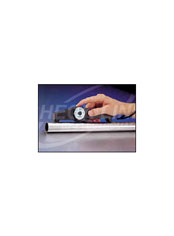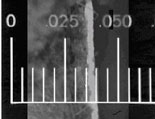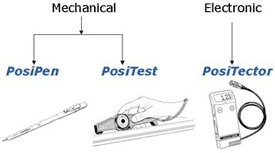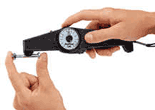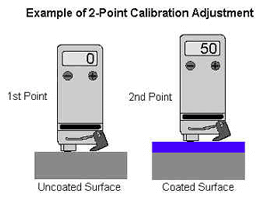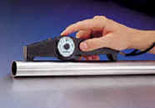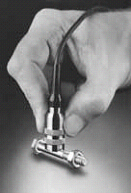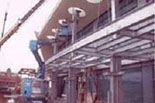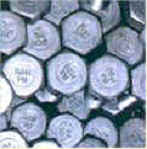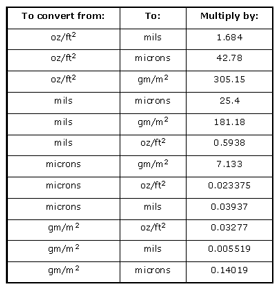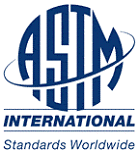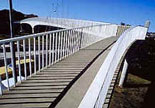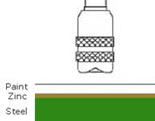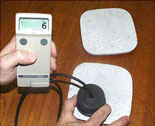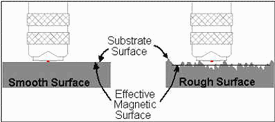|
By David Beamish DeFelsko Corporation, Ogdensburg, NY |
Based on a PowerPoint presentation made to: American Galvanizing Association |
||||
| This article provides an overview on how Coating Thickness Gauges are used within the galvanizing industry. It describes gauge choices, the 4 measuring steps, several precautions to be taken, and a Q&A sections for commonly asked questions. | Helpful information:
Other related products: |
||||
BACKGROUNDSteel fabricated parts are galvanized to provide corrosion protection. The final step in the process is inspection of...
The thickness of the galvanized coating is directly related to…
The thicker the coating, the longer the service life. Thus, coating thickness is the single most important inspection check to determine the quality of a galvanized coating.
|
|
||||
MEASURING THICKNESSSize, shape and number of pieces to be tested dictates the method to be used. Specified test methods are either destructive or non-destructive. There are four ways to measure the thickness of galvanizing...
The most practical test is the non-destructive method utilizing the magnetic principle for determining coating thickness. It is...
|
|
||||
MAGNETIC THICKNESS GAUGESThe 3 most common types of thickness gauges fall into one of two categories...
|
Because it is non-destructive, magnetic thickness measurements are the most common method of evaluating galvanizing coating thickness. |
||||
COMPARISON
|
Coating thickness is the single most important inspection check to determine the quality of a galvanized coating. |
||||
MECHANICAL GAUGESPen-Style:
|
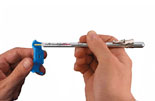
PosiPen |
||||
Dial-Type:
|
PosiTest |
||||
ELECTRONIC GAUGES
|
PosiTector 6000 |
||||
MEASURING STEPS
|
|||||
1. CALIBRATE
|
|
||||
|
2. VERIFY
|
|
||||
|
3. ADJUST
For electronic gauges, choose 1 of 3 methods…
|
Why adjust? To compensate for…
The PosiTector 6000 is factory calibrated and performs an automatic self-check each time it takes a measurement. For many applications no further adjustment is necessary after a RESET. Just check ZERO on the uncoated steel substrate, then measure. |
||||
CAUTION: When shims are used, resultant gauge measurements are less accurate and must be recalculated. For example, say the accuracy of a properly calibrated gauge is ±2%. The thickness of a shim might be accurate to within ±3%. The combined tolerance of the gauge and the shim will be ±4% as given by the sum of squares formula:
|
|
||||
|
4. MEASURE |
|||||
Using a mechanical pull-off gauge…
|
|
||||
Using an electronic gauge…
|
|
||||
PRECAUTIONS
|
|
||||
CONVERSIONS
|
 |
||||
ASTM STANDARDS
Excerpts from ASTM A123-02 Standard Specification for Zinc (Hot-Dip Galvanized) Coatings on Iron and Steel Products...
|
ASTM E 376 Standard Practice for Measuring Coating Thickness by Magnetic-Field or Eddy-Current (Electromagnetic) Examination Methods ASTM A123/A123M-02 Standard Specification for Zinc (Hot-Dip Galvanized) Coatings on Iron and Steel Products ASTM A153/A153M-03 Standard Specification for Zinc Coating (Hot-Dip) on Iron and Steel Hardware ASTM A653/A653M-03 Standard Specification for Steel Sheet, Zinc-Coated (Galvanized) or Zinc-Iron Alloy-Coated (Galvannealed) by the Hot-Dip Process A767/A767M-00b Standard Specification for Zinc-Coated (Galvanized) Steel Bars for Concrete Reinforcement |
||||
DUPLEX COATINGSThere are three ways to measure the thickness of paint over galvanized steel …
Use an electronic magnetic gauge such as the PosiTector 6000 F2 and “zero” it on the surface of the zinc. Then measure the paint thickness only. For best results it is recommended that several readings be taken to obtain an average paint thickness. PLUS: Simple. Gauge displays paint thickness only. MINUS: Only some electronic gauges have this capability and the Gauge doesn’t know which layer is responsible for changes in thickness.
These gauges measure the thickness of non-conductive coatings over conductive substrates. Zero the gauge on the zinc, then measure the paint thickness directly. PLUS: Zinc thickness variations usually don’t affect paint thickness results if the zinc is >3 mils MINUS: -Zinc thickness variations do affect paint thickness results if zinc is thin. -Gauge is overly sensitive to roughness, magnetism, curvature, etc. -Practical guidelines do not exist to guide the use of eddy current gauges on ferrous substrates
Use a magnetic gauge such as the PosiTector 6000 F1 or PosiTest FM to measure the thickness of both the zinc and paint layers together. Subtract the zinc layer thickness to provide the paint thickness value. PLUS: Fast and simple for any magnetic gauge. MINUS: Gauge doesn’t know which layer is responsible for changes in thickness. |
|
||||
Thermally Sprayed Zinc over ConcreteCathodic Protection is a commonly used method of corrosion control. Zinc is thermally sprayed onto the steel rebar reinforced concrete structure. The zinc acts as a sacrificial anode that is intended to corrode in order to protect the embedded steel rebar. DeFelsko has developed a technology that uses our conventional eddy-current PosiTector 6000 NHS to non-destructively measure conductive thermal spray zinc applied to non-conductive substrates such as concrete. |
|
||||
Q & AWhy does it seem I never get the same reading twice? Although the surface may “appear” smooth, microscopic surface roughness exists on both the zinc and steel. Therefore, the best representation of coating thickness is obtained by averaging a series of measurements as per ASTM A123-02.
|
|
||||
What should a coating thickness gauge read on a G90 galvanized coating? According to ASTM A 653-03, a G90 coating designation means the weight of zinc on both sides of a steel sheet is 0.90 oz/ft2 A magnetic thickness gauge measures only one side. Therefore:
|
G115 = 0.97 mils (25 um) / side G60 = 0.51 mils (13 um) / side G40 = 0.34 mils (9 um) / side G30 = 0.25 mils (6 um) / side |
||||
Other Related Products |
|||||
ULTRASONIC WALL THICKNESS GAUGESSimple, hand-held devices like the PosiTector UTG are ideal for measuring the total thickness of various metal objects including kettle wall thicknesses. They measure the wall thickness of materials such as : steel, cast iron, plastic and more. Ideal for measuring the effects of corrosion or erosion on tanks, pipes or any structure where access is limited to one side. |
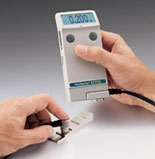 |
||||
| ADHESION TESTERS
Our PosiTest adhesion tester is not the preferred method for measuring the bond strength of galvanizing. The following are excerpts from ASTM A123-02 Standard Specification for Zinc (Hot-Dip Galvanized) Coatings on Iron and Steel Products...
|

